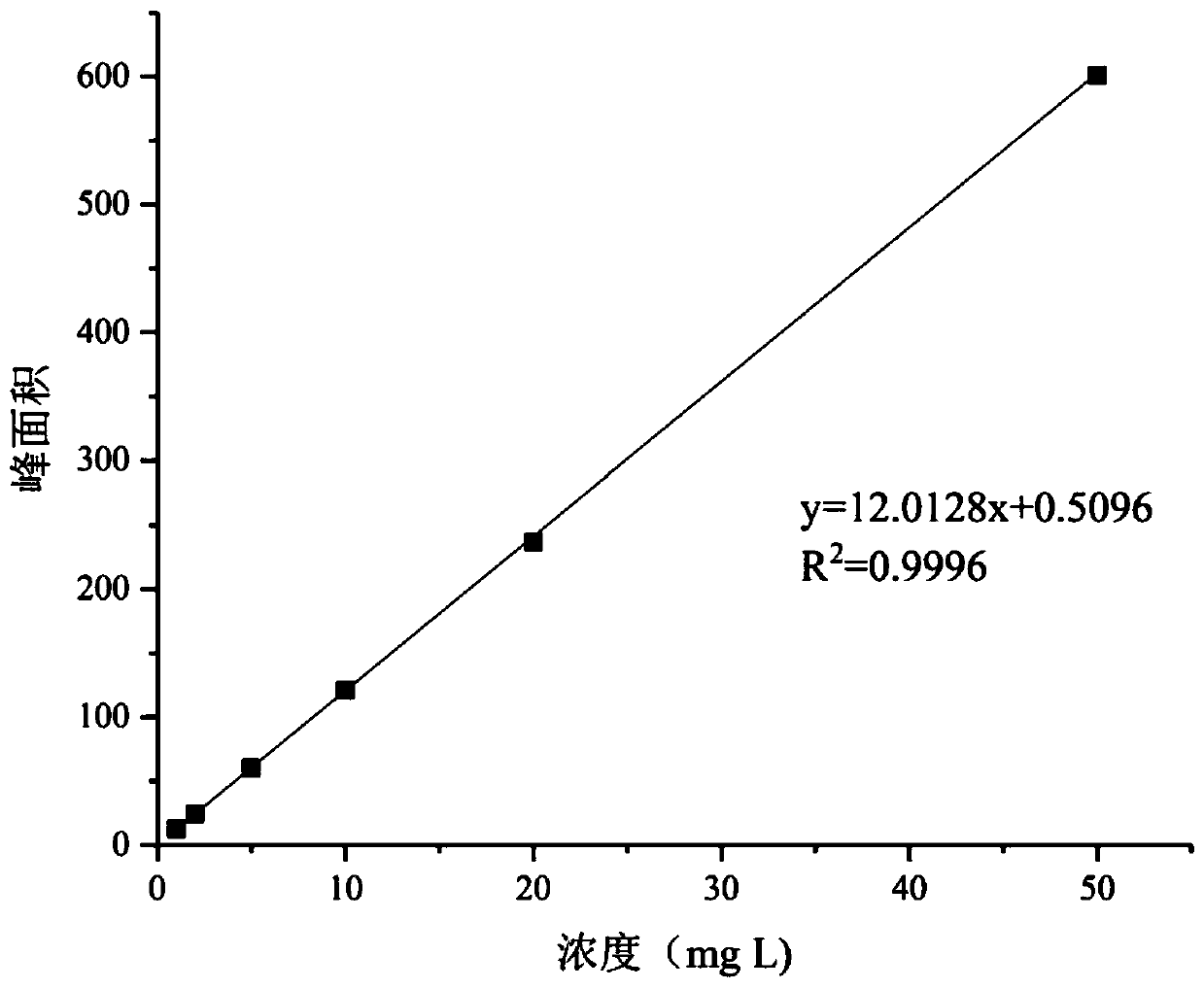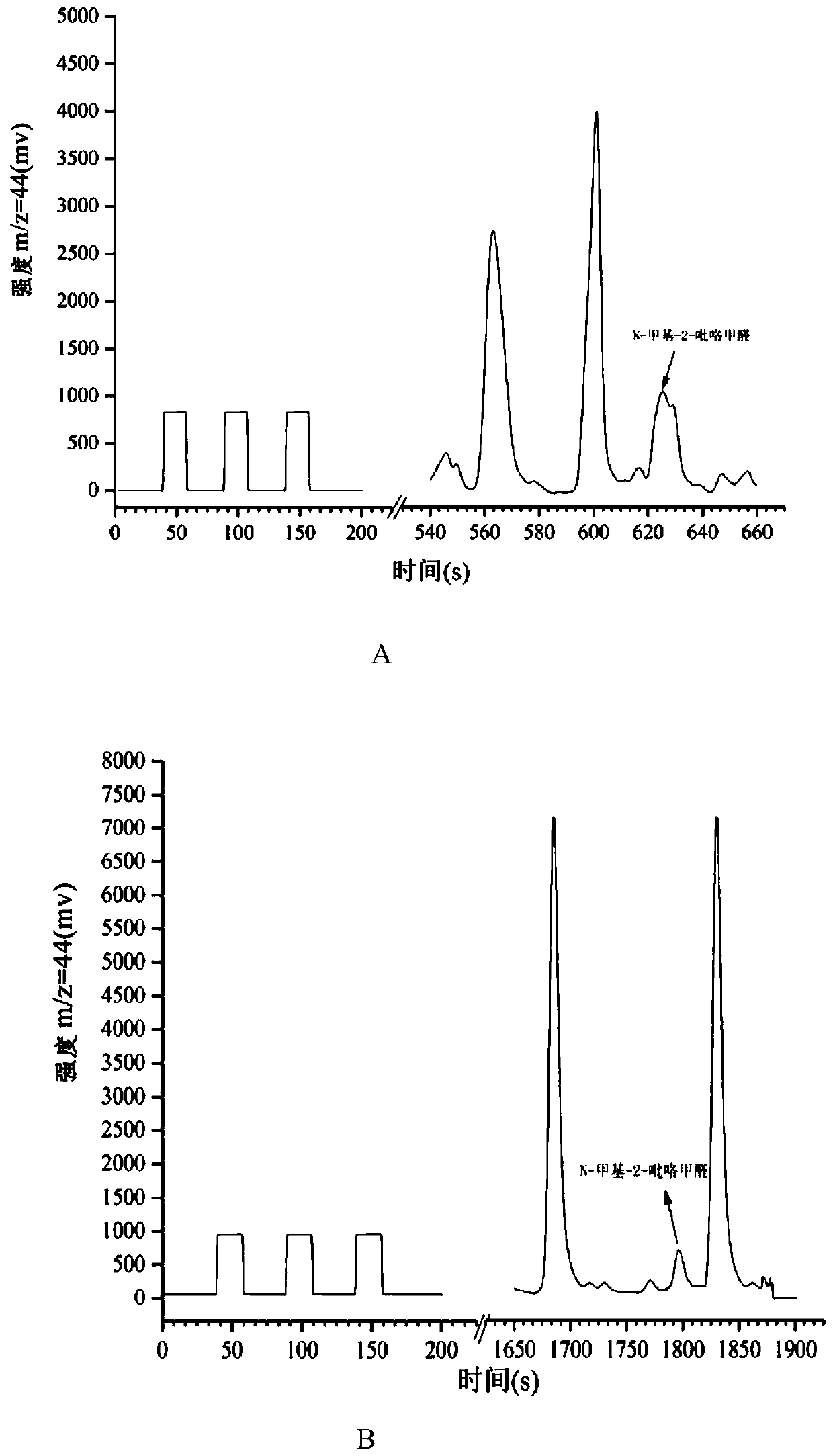Method and kit for detecting exogenous N-Methylpyrrole-2-carboxaldehyde
A pyrrole formaldehyde, exogenous technology, applied in the field of analytical chemistry, can solve the problems of difficult to distinguish the source of spice compounds, the method needs to be improved, etc., and achieve the effect of maintaining legal rights, low cost and simple operation
- Summary
- Abstract
- Description
- Claims
- Application Information
AI Technical Summary
Problems solved by technology
Method used
Image
Examples
Embodiment 1
[0060] In this embodiment, the endogenous and industrially synthesized N-methyl-2-pyrrole formaldehyde δ in natural coffee beans were measured respectively 13 C value, as follows:
[0061] (1) Extraction treatment: (a) A coffee bean sample without any added exogenous N-methyl-2-pyrrole formaldehyde was pulverized.
[0062] (b) Weigh 200g of sample, place it in a 1L flat-bottomed flask, add extraction reagent B: ultrapure water, connect to one side of the Likens-Nickerson simultaneous distillation extraction device, add extraction reagent A: dichloromethane to a 250mL flat-bottomed flask In the middle, it is connected to the other side of the Likens-Nickerson simultaneous distillation extraction device, and the flat-bottomed flasks on both sides are heated by an electric heating plate.
[0063] (c) After heating and extracting for 180 minutes, the extract was dried with a desiccant. Then, the extract was concentrated to 1 mL using a rotary evaporator set at 35 °C.
[0064] T...
Embodiment 2
[0072] The method for detecting exogenous N-methyl-2-pyrrole formaldehyde in the embodiment of the present invention is used to detect the exogenous N-methyl-2-pyrrole formaldehyde in coffee samples, specifically as follows:
[0073] (1) Extraction processing:
[0074] (a) Weigh 200g of coffee sample, place it in a 1L flat-bottomed flask, add extraction reagent B, and connect it to one side of the Likens-Nickerson simultaneous distillation extraction device.
[0075] (b) Add Extraction Reagent A to a 250ml flat bottom flask, connected to the other side of the Likens-Nickerson Simultaneous Distillation Extraction Unit. The flat-bottomed flasks on both sides are heated by an electric heating plate.
[0076] (c) After heating and extracting for 180 minutes, the extract was dried with a desiccant. Then, the extract was concentrated to 1 mL using a rotary evaporator set at 35 °C.
[0077] (2) According to the method of embodiment 1, the extract is carried out to gas chromatograp...
Embodiment 3
[0083] In this embodiment, different concentrations of N-methyl-2-pyrrole formaldehyde are carried out δ 13 C determination, specifically as follows:
[0084] 1) The N-methyl-2-pyrrole formaldehyde standard substance (1-50ppm) of different concentrations was separated by gas chromatography according to the method of Example 1, and then the carbon isotope ratio was measured.
[0085] 2) The response results of the N-methyl-2-pyrrole formaldehyde standard substance of different concentrations measured are as follows figure 1 As shown, the results show that the target is completely oxidized to CO 2 , the recovery rate is good, indicating that different concentrations of N-methyl-2-pyrrole formaldehyde extracted from food samples can achieve accurate determination of carbon isotope ratio.
PUM
 Login to View More
Login to View More Abstract
Description
Claims
Application Information
 Login to View More
Login to View More - R&D
- Intellectual Property
- Life Sciences
- Materials
- Tech Scout
- Unparalleled Data Quality
- Higher Quality Content
- 60% Fewer Hallucinations
Browse by: Latest US Patents, China's latest patents, Technical Efficacy Thesaurus, Application Domain, Technology Topic, Popular Technical Reports.
© 2025 PatSnap. All rights reserved.Legal|Privacy policy|Modern Slavery Act Transparency Statement|Sitemap|About US| Contact US: help@patsnap.com



